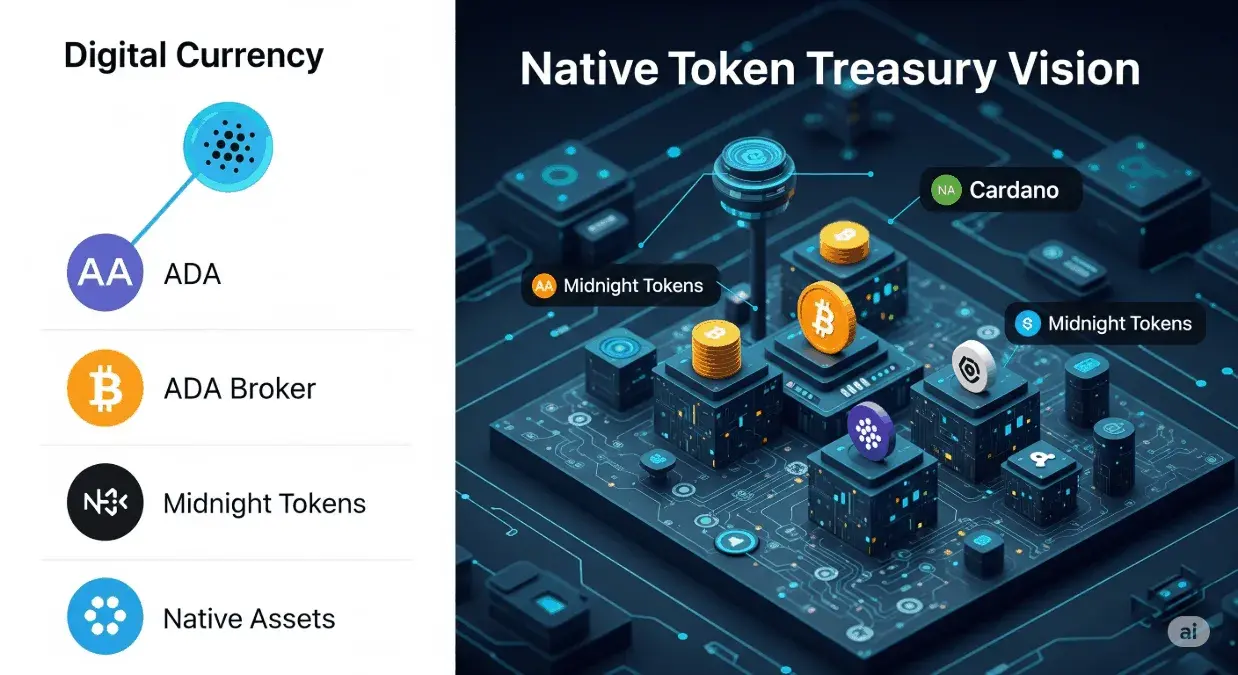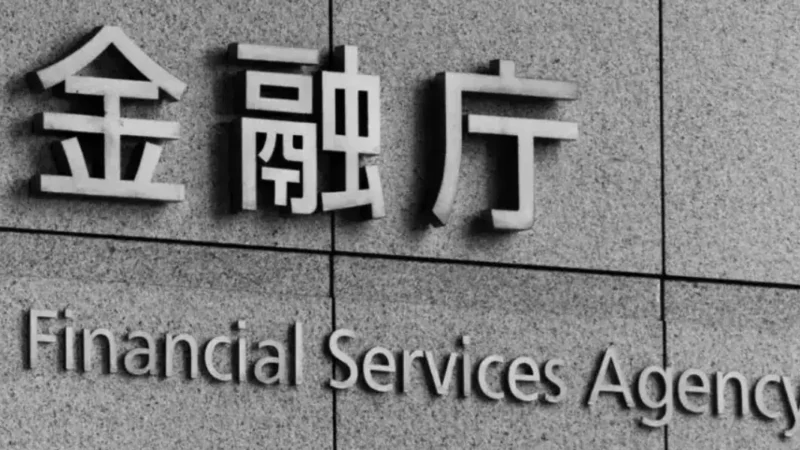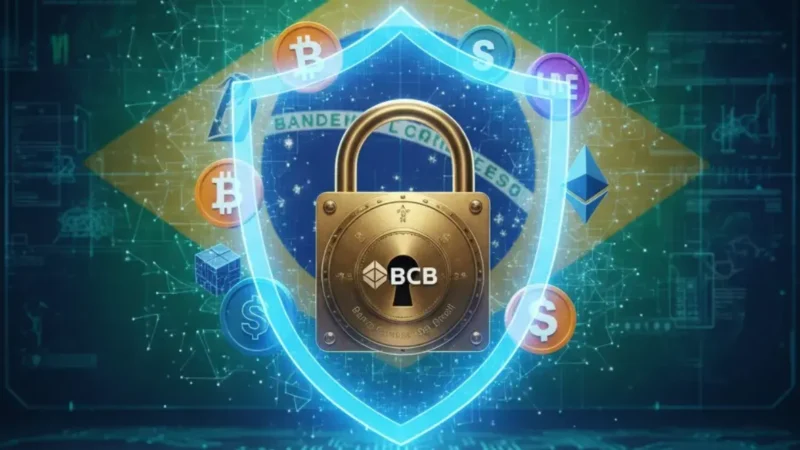Cardano’s Bold New Treasury: A Native Token Revolution

In a significant strategic shift, Charles Hoskinson, co-founder of Cardano, has unveiled a groundbreaking proposal for the network’s treasury, abandoning the previously considered Bitcoin-backed reserve in favor of an architecture built exclusively on Cardano’s Native Token assets. This ambitious new vision, detailed in a recent post on X, outlines a plan to underpin Cardano’s future growth and decentralized finance (DeFi) ecosystem by utilizing ADA, the privacy-centric Midnight token, and a curated selection of the top 50 native Cardano assets by market capitalization. This pivot represents a profound vote of confidence in Cardano’s internal ecosystem and sets the stage for a potentially transformative era of homegrown innovation and economic self-sufficiency.
For weeks, the crypto community had buzzed with discussion surrounding Charles Hoskinson’s earlier suggestion of incorporating Bitcoin into Cardano’s treasury. While some saw merit in diversifying with the industry’s largest cryptocurrency, a chorus of critics raised concerns about potential strategic dilution and the optics of tethering Cardano’s destiny to a rival blockchain. The current proposal by Charles Hoskinson squarely addresses these concerns, signaling a definitive move to reinforce Cardano’s independence and foster a self-sustaining economic model.
This strategic reorientation, championed by Charles Hoskinson, is designed to achieve multiple objectives: solidify the network’s autonomy, enhance long-term value for existing ADA holders, and channel liquidity and development directly into Cardano’s burgeoning smart contract economy. By focusing exclusively on assets born and bred within the Cardano ecosystem, the foundation aims to create a virtuous cycle of growth, where the treasury’s success directly correlates with the overall health and adoption of Cardano-native projects.
From External Anchors to Internal Strength: The Rationale Behind the Pivot
The decision to move away from a Bitcoin-backed reserve is a clear statement of intent from Charles Hoskinson and the Cardano Foundation. In a rapidly evolving blockchain landscape, maintaining a distinct identity and fostering a robust internal economy are paramount. While Bitcoin undoubtedly holds a dominant position in the crypto market, integrating it into Cardano’s core treasury could have presented challenges related to strategic alignment and perceived reliance on an external, albeit influential, entity.
The previous concept, while seemingly offering stability through Bitcoin’s established liquidity, also carried the inherent risk of linking Cardano’s financial stability to the price fluctuations and regulatory uncertainties of another chain. Charles Hoskinson’s new direction mitigates this risk by keeping all treasury assets within the Cardano ecosystem, thereby providing a more integrated and controlled approach to treasury management. This strategic shift underscores a commitment to fostering a truly decentralized and self-reliant network, where the success of the treasury directly benefits the projects and participants within the Cardano ecosystem.
Furthermore, this move aligns with the broader vision of Web3, which emphasizes decentralized governance, community ownership, and the creation of self-sustaining digital economies. By investing in its own native tokens, Cardano is not just building a treasury; it’s building a testament to its foundational principles, demonstrating a belief in its own technology and community to generate and sustain value. Charles Hoskinson has consistently advocated for a future where blockchain networks are not just platforms but self-governing organisms, and this treasury model is a significant step in that direction.
The Multitoken Treasury Model: A Diversified Approach
The core of Charles Hoskinson’s new treasury proposal lies in its diversified, multi-token structure. This model deviates significantly from traditional single-asset treasuries, opting instead for a basket approach that mirrors a diversified investment portfolio. The proposed allocation includes:
- ADA as the Foundational Store of Value: As the native cryptocurrency of the Cardano blockchain, ADA will serve as the primary asset within the treasury, providing a stable and liquid base. Its inherent utility in staking, governance, and transaction fees makes it a natural choice for the foundational layer of the treasury. This emphasis on ADA reinforces its role as the backbone of the Cardano ecosystem and provides direct benefits to its holders.
- Midnight (MN): The Privacy Layer Token: The inclusion of Midnight, Cardano’s privacy-focused sidechain token, highlights the network’s commitment to enabling discreet and secure financial transactions. As regulatory scrutiny over digital assets intensifies, privacy-preserving technologies are becoming increasingly important. Midnight’s inclusion in the treasury signals Cardano’s intent to be at the forefront of this evolution, offering solutions for sensitive data and transactions. This strategic allocation by Charles Hoskinson anticipates future market demands and positions Cardano as a leader in confidential computing.
- The Top 50 Native Cardano Tokens: Perhaps the most innovative and potentially impactful aspect of the proposal is the inclusion of the top 50 native tokens by market capitalization. This broad inclusion encompasses a wide array of projects, from decentralized exchanges (DEXs) like Minswap (MIN) to burgeoning telecommunications initiatives like World Mobile Token (WMTYX). This diversified approach aims to:
- Distribute Risk: By spreading the treasury’s holdings across numerous projects, the risk associated with any single project’s performance is significantly mitigated. This diversification strategy helps to insulate the treasury from the volatility inherent in nascent and emerging blockchain projects.
- Foster Collaboration and Interoperability: The inclusion of diverse projects within the treasury is expected to incentivize greater collaboration among token teams. This could lead to shared liquidity pools, joint development efforts, and enhanced interoperability across the Cardano ecosystem, ultimately enriching the user experience and expanding the network’s utility.
- Turbocharge Total Value Locked (TVL): By providing direct financial backing and incentives through cross-token initiatives and joint liquidity pools, the treasury can significantly contribute to an increase in Total Value Locked (TVL) on the Cardano blockchain. This, in turn, will attract more users, developers, and capital to the ecosystem.
This multi-token strategy, as envisioned by Charles Hoskinson, is a bold experiment in decentralized finance, moving beyond the traditional single-asset reserve model to embrace a more holistic and interconnected ecosystem-centric approach.
Community Reactions: A Symphony of Support and Scrutiny
The announcement of this new treasury model has elicited a varied response from the Cardano community, reflecting both enthusiastic support and thoughtful critiques. The passionate discussions across social media and forums underscore the community’s deep engagement and commitment to Cardano’s future.
The Advocates’ Chorus: Many within the community have lauded the move as a strong declaration of confidence in Cardano’s homegrown projects. Supporters believe that this inward-looking strategy will significantly accelerate DeFi adoption on the network by providing a robust financial backbone for its native applications. They also predict that this approach will reward early investors in Cardano-native tokens, creating a more direct and tangible incentive for participation within the ecosystem. The sentiment among these advocates is that Charles Hoskinson is truly putting his money where his mouth is, backing the very projects that make Cardano unique. They see this as a pivotal moment for Cardano to truly differentiate itself and showcase its unique value proposition.
The Critics’ Counterpoint: However, not all reactions have been universally positive. Some detractors have raised concerns about the sheer number of tokens included in the treasury. The idea of incorporating 50 different tokens, even if they are the top by market cap, has led to worries that the treasury could become unwieldy and challenging to manage effectively. The complexity of managing such a diverse portfolio, including potential rebalancing needs and the administrative overhead, is a valid point of contention.
Furthermore, a segment of critics worries about potential perceptions of favoritism. While the selection criteria of “top 50 by market cap” aims for objectivity, some fear that the treasury’s involvement could be seen as an endorsement that gives certain projects an unfair advantage, potentially stifling organic competition. A smaller but vocal contingent even argues for a simpler approach, suggesting that the treasury should stick to ADA alone for maximum clarity, simplicity, and ease of management. They contend that while diversification is good, too much diversification, especially with emerging assets, could introduce unnecessary volatility and management overhead. The long-term implications of managing such a diverse portfolio, particularly in a nascent and rapidly evolving market, remain a key point of discussion for critics.
The constructive dialogue surrounding this proposal highlights the decentralized and community-driven nature of Cardano’s governance. The feedback, both positive and critical, provides valuable insights that Charles Hoskinson and the wider development community can use to refine and optimize the treasury model.
Steering Cardano’s DeFi Destiny: A Vision for Self-Sufficiency
By anchoring the treasury firmly in Cardano-native tokens, Charles Hoskinson is making a significant statement about the network’s ability to achieve self-funding and long-term sustainability. This initiative is more than just a treasury management strategy; it’s a profound declaration of independence and a blueprint for how a decentralized protocol can foster and nurture its own ecosystem.
If successful, this groundbreaking approach could send ripples throughout the wider crypto industry. It would provide a compelling case study for other blockchain networks on how to build robust, self-sustaining economies that reduce reliance on external assets and empower their own native projects. It represents a maturation of the blockchain paradigm, moving from a focus on individual chain dominance to a more collaborative and integrated ecosystem approach.
The success of this initiative will hinge on several factors: the careful management of the multi-token portfolio, the continued growth and innovation within the Cardano ecosystem, and the ability of the community to collaboratively govern and adapt the treasury model over time. As Charles Hoskinson has often emphasized, the strength of Cardano lies in its community and its commitment to rigorous research and development.
In essence, Charles Hoskinson is not just proposing a new treasury; he is proposing a new philosophy for decentralized economic growth. This bold move could solidify Cardano’s position as a leader in the evolving DeFi landscape, showcasing a model of self-sufficiency and endogenous value creation that could inspire a new wave of blockchain innovation. The world will be watching as Cardano embarks on this exciting and ambitious new chapter, guided by the vision of Charles Hoskinson to build a truly decentralized and resilient future.
The Road Ahead: Implementation and Evolution
The transition to this new treasury model will undoubtedly involve complex technical and governance considerations. Key aspects that will need to be addressed include:
- Governance Frameworks: Establishing clear and robust governance mechanisms for managing the multi-token treasury will be paramount. This will likely involve community voting on allocation strategies, rebalancing decisions, and the addition or removal of tokens from the top 50 list. The effectiveness of these governance processes will be crucial for the long-term success and perceived fairness of the treasury.
- Technical Implementation: The technical infrastructure for securely holding, managing, and potentially staking such a diverse portfolio of native assets will require careful design and implementation. This may involve the development of new smart contracts or enhancements to existing treasury management tools.
- Risk Management: Despite the diversification, inherent risks remain. The treasury will need robust risk management protocols, including strategies for managing market volatility, potential exploits of individual native tokens, and unforeseen market shifts. Continuous monitoring and agile adaptation will be key to mitigating these risks.
- Community Education and Engagement: Ongoing communication and education will be vital to ensure that the broader Cardano community understands the intricacies of the new treasury model, its benefits, and its potential challenges. Fostering an informed and engaged community will be critical for its successful adoption and ongoing support.
Stay informed, read the latest crypto news in real time!
The vision championed by Charles Hoskinson for a Cardano-native treasury is a testament to the network’s commitment to its principles of decentralization, sustainability, and community-driven growth. As the implementation progresses, the crypto world will be watching to see how this ambitious experiment in self-sufficiency unfolds and what lessons it offers for the future of decentralized economies. The journey ahead will be complex, but the potential rewards—a truly independent, resilient, and thriving Cardano ecosystem—are immense.






